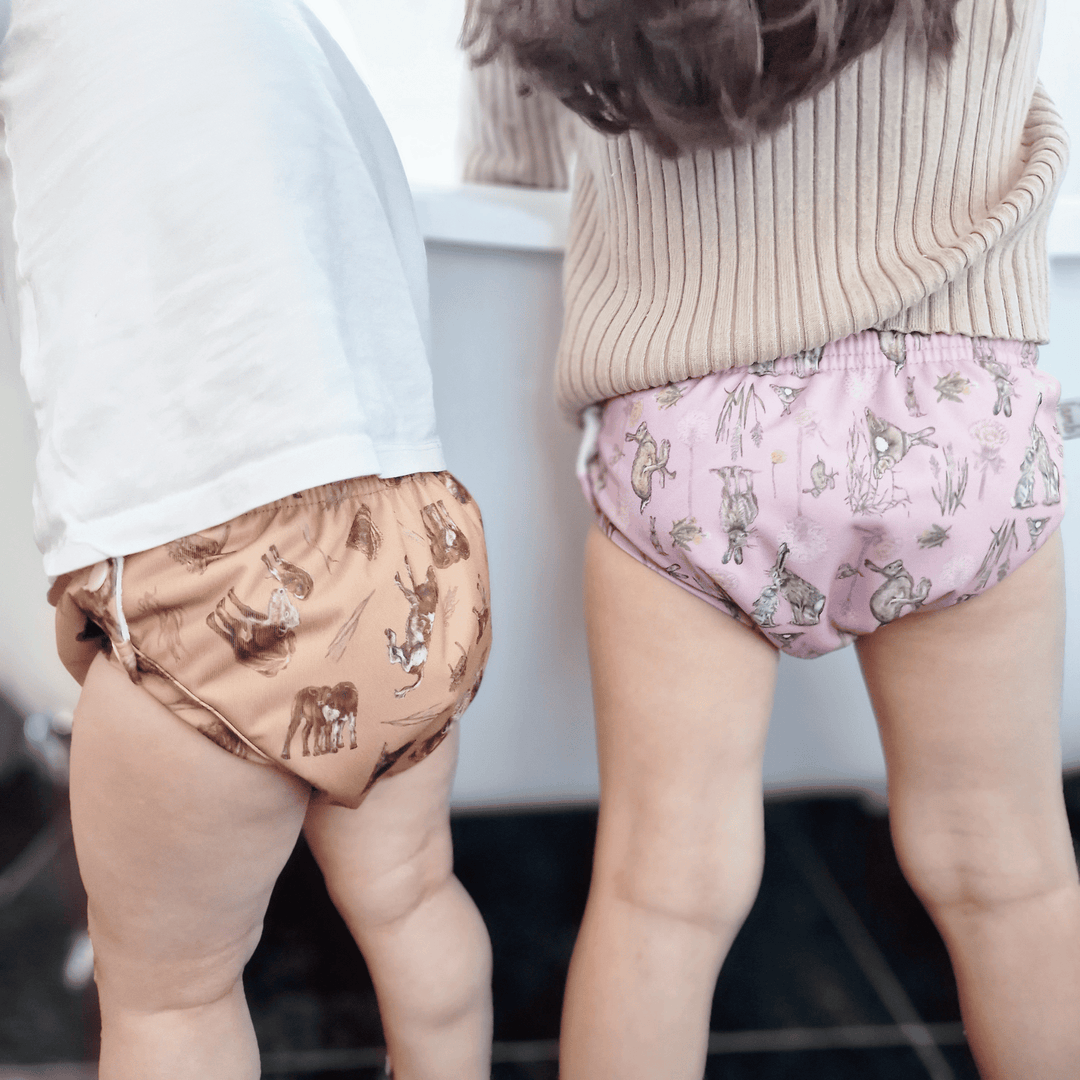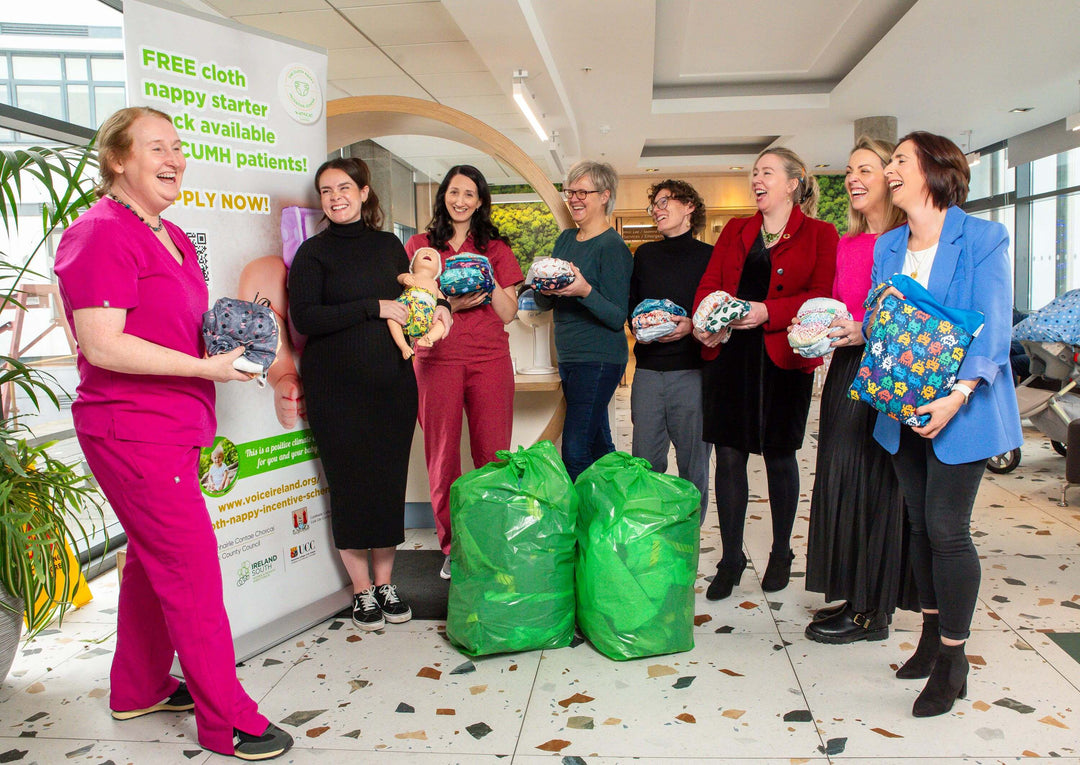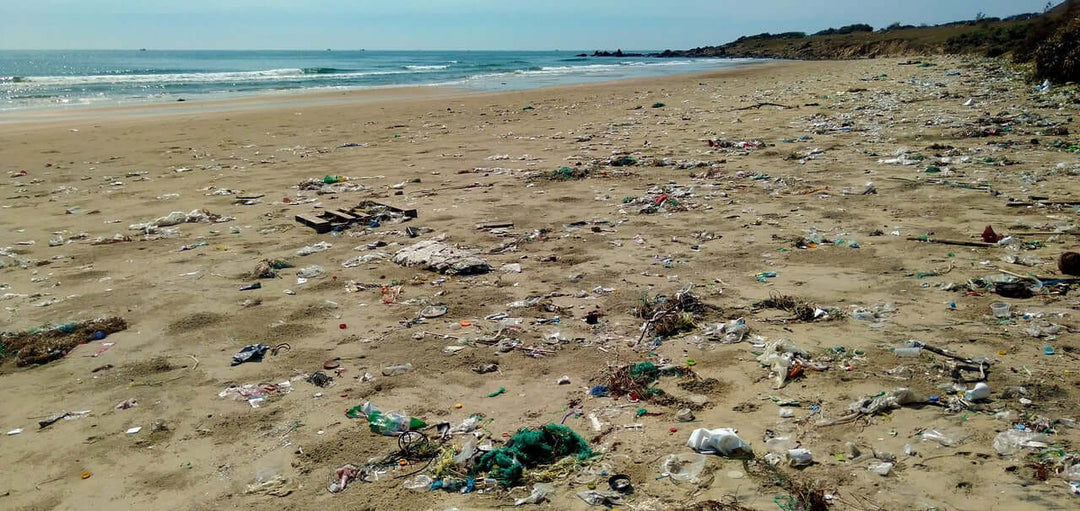How you should wash and dry your Cloth Nappies
HOW YOU SHOULD WASH AND DRY YOUR CLOTH NAPPIES
Step 1 – How to wash cloth nappies
Taking good care of your cloth nappies to ensure they last from birth to potty training with your baby, and indeed any more babies you may have, all begins with taking the reusable nappy off when it is time to change your baby.
You may decide to use reusable or disposable liners in your cloth nappies. This is entirely your choice and should be a fit for your lifestyle. Disposable liners can be popped in the bin once removed from the baby, and reusable liners will be washed along with your cloth nappies.
The cloth nappy will be placed into a dedicated bucket, a hanging wet bag, or a nappy pail alongside your reusable liners. There is no need to soak your cloth nappies prior to a nappy wash, nor is it recommended. If your nappy is a hook and loop style, please ensure if it has wash tabs that you fasten these prior to being stored and washed. Also, if you use removable reusable liners, take these out of the nappy when storing them before a wash cycle in your washing machine. Cloth wipes, washable liners, absorbents (fitted nappies, inserts, boosters, etc.), and the shells of the nappies, or full nappies such as AiOs (All-in-ones) may all be washed together.

Step 2 – Washing your cloth nappies: Which wash cycle to use and what washing machine is best
Whether you use a laundry bucket lined with a mesh bag, a wet bag, or hanging pail, you can simply place the bag and nappies into your machine. Just make sure to empty the bag first, and the bag may be washed as well.
Many parents will insist on washing nappies when the drum is completely full, and while this will indeed save you some money, here at Summer Sweets Baby we think it is a good idea to wash nappies when your machine is no more than three quarters full to allow proper agitation for cleaning the dirty nappies, especially to get rid of any stains and poo. There is logic and reasoning for this; a modern and economical washing machine routine is designed to run with lower water consumption. Also, the design of your cloth nappies means the material is manufactured to absorb and retain dirty moisture, and as a result if your machine is fully loaded this will mean that there is insufficient water to wash your reusable nappies properly.
Top tip: If it’s wash day and you don’t have enough to fill your machine with your usual wash routine or main wash to the recommended level for your preferred wash cycle for your many nappies, you may bulk it up with some tea or bath towels to help. Also ensure you use the correct amount of washing powder when you wash your nappies. If you use a non bio detergent,
Most machines will automatically run a cold rinse cycle before your main wash. If yours does not, we recommend you run a ‘rinse’ cycle. This wash cycle aids in removing any solids, stains, and poo, and flushes away your baby’s urine. This will also help prevent staining of your nappies. You should run a rinse cycle rather than a pre wash cycle, as this will ensure that the water from the rinse is drained and not recirculated in the main hot wash cycle for the actual cleaning of your nappies. Many parents opt to do more, such as a strip wash for soiled nappies or
For the initial rinse cycle, choose a warm wash at 40°C, with a low spin speed (we recommend 800RPM). This can be a quick wash cycle as it’s done to get most of the heavy soil out of the nappies. Depending on the brand of nappies and the instructions on the label, you should be running your main wash at either 40°C or 60°C. We recommend you use your machine's longest wash cycle (most commonly seen on machines as a cotton wash) to ensure a thorough clean with sufficient water. We cannot emphasise enough that you should follow the washing guidelines from the manufacturer when washing your cloth nappies, and each brand will have its own guide so please refer directly to this.
You should:
Give new nappies a pre wash
Use the proper bio or non-bio detergent according to the nappy manufacturer
Preferably use a powder detergent over a gel or liquid detergent
Use the correct dosage based on your home’s water hardness (see your detergent box for the recommendation)
Wash cloth nappies, cloth wipes and reusable liners together to save water, but remove any microfibre, hemp, bamboo and fleece liners from nappies before washing
Run maintenance cycles as per washing machine manufacturer instructions once per month as this assists with stain and smell removal
Clean and dry your nappy bucket with an antibacterial wipe before the next load to remove any bacteria and any smell.
You should not:
Use fabric softener
Use a liquid detergent
Use any bleach
Step 3 – Drying your reusable nappies
Your cloth nappies can be dried on a line or in a tumble dryer on a low heat/cool and delicate spin, and this is entirely your choice. Just double check the care instructions on the label before you tumble dry. Obviously, the use of a washing line ensures there is no electricity being consumed, but we are realistic and appreciate in Ireland this is often simply not a possibility. Line drying your nappies outside also helps with stains, especially from exclusively breastfed babies. Sun is a natural stain remover and you’ll notice a difference even after half an hour!
If you choose to use a tumble dryer, we strongly encourage you to use the lowest RPM and temperature that is possible; many tumble dryers today have cotton or delicate cycles, and this is perfect for cloth nappies that recommend using a dryer. If you are planning to dry your nappies on a clothes horse inside of the home, be sure to keep away from direct heat, such as a radiator. Another great option is to have a dehumidifier set up in the same room as the drying nappies.
Top tip: If you live in an area that has particularly hard water, your cloth nappies can feel very stiff after line drying of laundry day. Many of our customers have advised that a quick dryer cycle on the lowest setting helps them to soften the fabric again.
As always, for more laundry advice, queries about washing machines and tumble drying, non bio versus bio washing, or advice on cleaning fabrics, please reach out to us and we will be thrilled to help.





